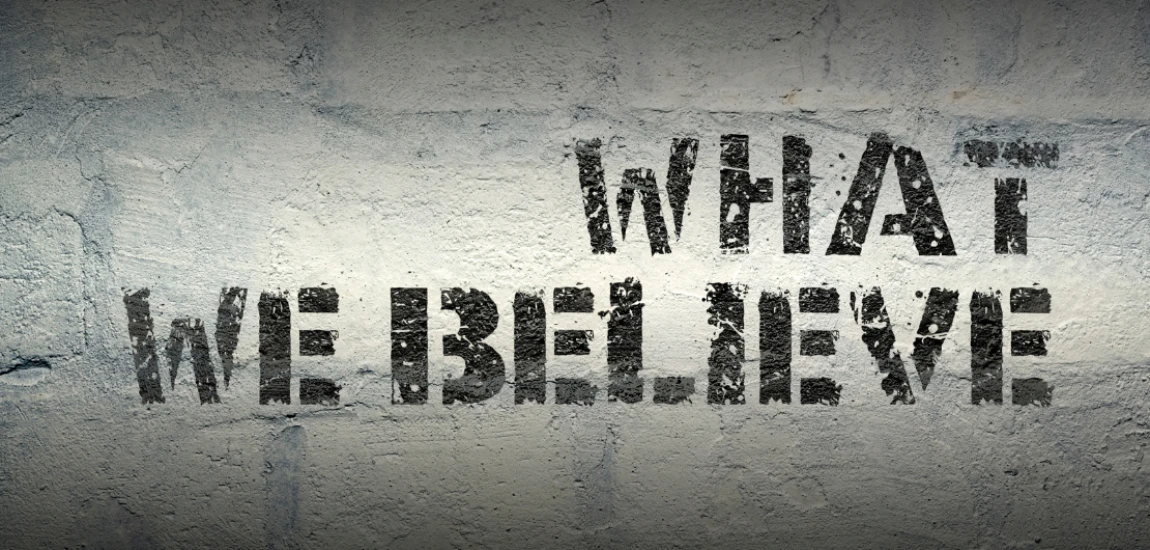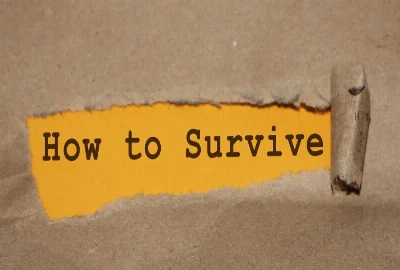The Internet Is Out of Context: How Content Detachment Is Changing What We Believe

We scroll through an endless stream of memes, screenshots, and video clips, consuming information at lightning speed. But most of what we encounter online is stripped of its original framing—shared without background, cropped from its source, or remixed beyond recognition. The internet is out of context, and this detachment is quietly reshaping how we understand truth, trust, and reality itself.
In traditional media, context was built into the experience. Newspapers placed stories in sections, TV anchors offered background, and books included references. Online, content floats freely, detached from origin and intent. A snippet of a podcast becomes a viral tweet, a photo is reshared without attribution, and a video clip circulates with captions that reinterpret its meaning. By the time it reaches us, the content has often been divorced from its original narrative.
This detachment matters because context is what allows us to interpret information accurately. Without it, content is vulnerable to distortion, manipulation, and misinterpretation. A sarcastic joke becomes a serious quote. A staged photo is mistaken for reality. A statistic is shared without methodology. The internet doesn’t just remove context—it replaces it with whatever framing the sharer provides, whether that’s truthful, biased, or misleading.
In this blog, we’ll explore why the internet is out of context, how this detachment shapes belief systems, and what we can do to navigate an online world where meaning is constantly uprooted from origin.
The Rise of Context Collapse
Media scholars often talk about context collapse—a phenomenon where different audiences, environments, and interpretations collide into one space. On social media, a single piece of content can be consumed by millions of people, each bringing their own assumptions, cultures, and biases to it. Unlike in face-to-face communication, where we adjust messages based on audience, online messages are flattened, stripped of nuance, and broadcast without boundaries.
This collapse is accelerated by how platforms are designed. Algorithms reward shareability, not accuracy. A punchy headline or shocking clip is more likely to spread than a nuanced explanation. As content is reposted across TikTok, Instagram, Twitter (X), Reddit, and beyond, it sheds its original layers. What starts as a contextualized statement in a long interview may end up as a single out-of-context quote on a meme page.
The consequences of context collapse are profound. Misunderstandings flourish because viewers fill in the blanks with their own narratives. A politician’s offhand comment may be reframed as policy. A celebrity’s joke may be recirculated as evidence of scandal. Once content is detached, it becomes a canvas for projection, more about the beliefs of the audience than the intent of the creator.
What makes this dangerous is scale. Offline, misunderstandings might spread among a few people. Online, they can go viral globally within hours. Context collapse not only alters interpretation but also accelerates misinformation. It blurs the line between original meaning and audience-imposed meaning, creating a culture where content is endlessly redefined, often beyond recognition.

How Misinformation Thrives in Detached Content
If the internet is out of context, misinformation is its biggest beneficiary. Detached content—snippets without sources, statistics without methodology, or images without attribution—creates fertile ground for false narratives to take root.
Take screenshots, for example. A cropped tweet or headline image often circulates without a link to the full story. Without the surrounding article or conversation, the screenshot becomes the “truth,” even if it was originally satire, parody, or misquoted. Similarly, short-form video can mislead by design. A 10-second clip may suggest outrage or wrongdoing, but the full version might reveal nuance or even the opposite conclusion.
The viral nature of misinformation often depends on this detachment. When a claim lacks context, it’s easier to reshape. A false caption added to a photo can completely rewrite its meaning. An AI-generated image may circulate as real because it’s unanchored to a verifiable source. Each share reinforces the detached version, and over time, the original context becomes harder to find.
Cognitive psychology explains why we fall for this. Humans use heuristics—mental shortcuts—to process information quickly. Detached content feeds into these shortcuts: bold headlines confirm biases, striking images evoke emotion, and simple soundbites override complex realities. Without context, our brains default to quick judgment rather than critical evaluation.
This dynamic explains why fact-checking often struggles to keep up. By the time context is restored—through corrections or debunking—the detached version has already embedded itself in the digital imagination. In short, misinformation thrives not because people want to be misled, but because the internet strips away the very tools (background, framing, sources) that help us interpret information correctly.

Memes, Remix Culture, and the Death of Original Meaning
Beyond deliberate misinformation, there’s also the playful but equally powerful force of remix culture. Online, memes thrive on taking content out of context and reassigning it with new meanings. A serious stock photo becomes a running joke. A movie still is captioned with text that has nothing to do with the original scene. Over time, the meme meaning overshadows the original intent.
This phenomenon reflects the creativity of internet culture but also its capacity to detach meaning entirely. Once an image enters the meme economy, it often loses ties to its origin. Many younger internet users know cultural references only through memes, not through their original media. For example, a screenshot from an old reality show may circulate endlessly as a reaction meme, even if viewers have no idea what the show was.
This detachment isn’t always harmful—it’s part of how digital communities bond and communicate. Memes allow collective reinterpretation and give content new cultural life. But they also illustrate how the internet accelerates the death of original meaning. Over time, the meme version becomes “truer” than the original.
The remix culture extends beyond memes to platforms like TikTok, where trending audios are constantly recontextualized. A song clip might have originally expressed heartbreak, but on TikTok, it becomes a soundtrack for comedy skits. Context is fluid, shifting with each reuse. While this fuels creativity, it also normalizes the idea that content exists to be detached, repurposed, and consumed without reference to its origins.
In a world where remixing is the norm, the expectation of stable meaning weakens. Content is no longer valued for what it originally said, but for how well it can be adapted to say something new.

What This Means for Belief and Trust Online
When the internet is out of context, belief itself becomes unstable. We’re no longer evaluating content on its original merit, but on the framing it’s given by whoever shares it with us. Trust shifts from source to sharer—people believe a clip not because they know where it came from, but because it was shared by a friend, influencer, or community they trust.
This shift has two key effects:
Erosion of Institutional Trust: Traditional markers of credibility—news outlets, experts, fact-checkers—struggle to compete with viral, detached snippets. Many users no longer trace information back to original sources; they accept what circulates in their feed as valid.
Rise of Personalized Truth: Detached content allows people to interpret information however they want. Instead of a shared reality grounded in context, we get fragmented realities shaped by individual biases. Each user’s version of “truth” is influenced by how detached content aligns with their worldview.
The danger is not just misinformation, but polarization. Detached content fuels echo chambers, where context isn’t restored but replaced with interpretations that fit group narratives. A single photo can confirm two opposing beliefs depending on the caption. In this way, context detachment doesn’t just distort facts—it fragments collective reality itself.
Over time, this erodes not just what we believe, but how we believe. Trust in information becomes less about evidence and more about emotional resonance. If something feels true in its detached form, it’s accepted—even if the full context would reveal otherwise.

How to Navigate an Out-of-Context Internet
If the internet is out of context, how can we, as users, navigate it more responsibly? While platforms bear responsibility for how content is designed and shared, individuals also need tools to resist detachment.
Here are actionable steps:
Pause Before Sharing: Ask whether you’ve seen the full version of the content. A single screenshot or clip rarely tells the whole story.
Check Original Sources: Reverse image search, follow links, or seek out the original post. Restoring context is often as simple as looking beyond the surface.
Notice the Frame: Pay attention to how captions or edits influence interpretation. Is the framing designed to evoke outrage, humor, or bias?
Diversify Feeds: Exposure to different communities reduces the risk of echo chambers where detached content circulates unchallenged.
Promote Context: When sharing content, include the source or background. Adding context helps resist the cycle of detachment.
On a broader level, digital literacy must adapt to this reality. Schools, workplaces, and platforms should teach users not just how to fact-check, but how to evaluate context. Platforms themselves could also innovate—embedding original links more visibly, flagging heavily cropped or edited media, and designing features that encourage users to trace back sources.
Navigating an out-of-context internet requires effort, but it’s essential for preserving shared meaning in a digital world that constantly pulls meaning apart.




